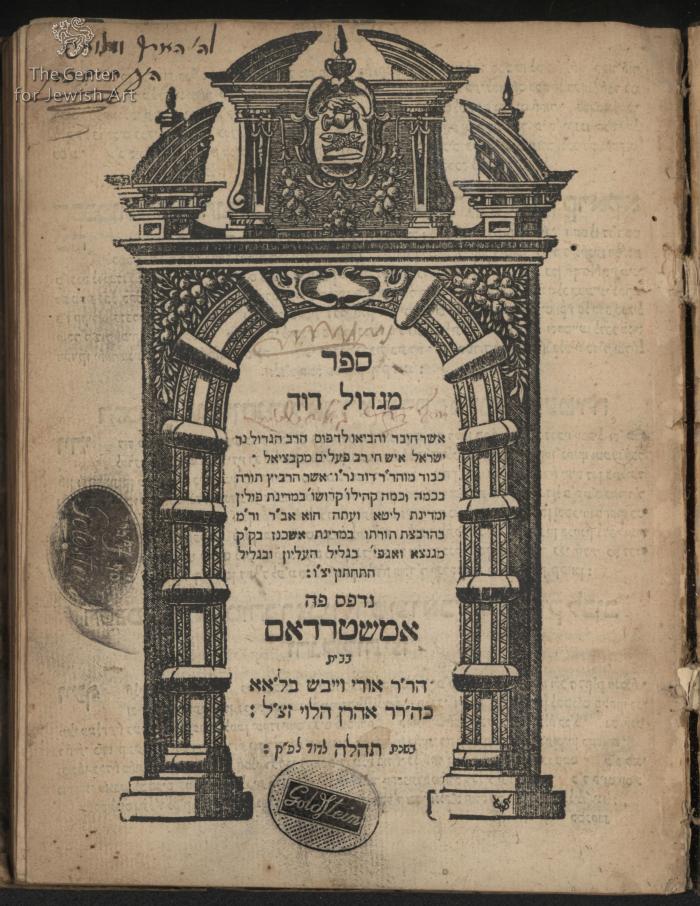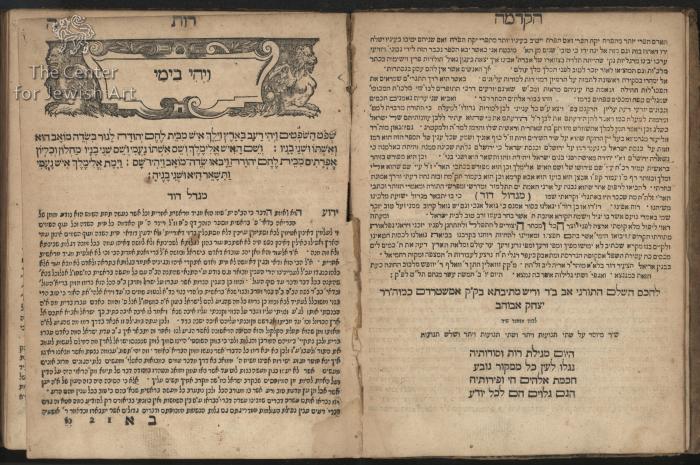Obj. ID: 35313 Migdal David by David ben Aryeh Leib Lida, Amsterdam, 1680

sub-set tree:
The following description was prepared by William Gross:
Considerable controversy surrounds the authorship of this kabbalistic commentary on the Book of Ruth. Ostensibly written by R. David ben Aryeh Leib Lida (c. 1650 – 1696), it has been attributed by many to R. Hayyim ben Abraham ha-Kohen (c. 1585 – 1655).
Lida’s authorship has been denied and he has been accused, among other things, of plagiarism of R. Hayyim ha-Kohen’s Torah Chesed, a charge accepted by R. Hayyim David Azulai (Hida), R. Hayyim Michael and R. Jacob Emden. Lida, however, continues to refer to himself as the author of Migdal David on the title page of Ir Miklat (1690), though he may well have alluded to another author in his introduction to Migdal David, in which he writes that he so entitled it for, “while it is true that I am a redeemer, there is also another redeemer closer than I” (Ruth 3:12). He also recalls an allegory from the Zohar which similarly alludes, albeit with regards to the publisher, to the merit that comes to one who discovers something of value.
Rabbi David ben Aryeh Leib of Lida (c.1650-1696) wrote works of rabbinic literature, including Sefer Shomer Shabbat and books on the 613 Mitzvot, bris milah, the Shulchan Aruch, the Book of Ruth, and Jewish ethics. His uncle was the R. Moses Rivkes, author of "Be'er ha-Golah." Besides serving initially as the rabbi of Lida (for which he is named), he also functioned as the of Zwolin and Mainz. In 1682, he was appointed the Ashkenazi rabbi of Amsterdam.
Architectural gateway adorns the title page, topped by a cartouche containing the printer’s emblem of the printer, Uri Phoebus: a laver pouring water, two fish, and a knife (?).
Uri Fayvesh (Phoebus) b. Aaron Witmund ha-Levi opened his own print-shop in Amsterdam in 1658, having worked previously for Immanuel Benveniste. He would print about 100 titles during the years he was active in Amsterdam (1658-1689). Towards the end of this period Phoebus became embroiled in a now-famous controversy with the Athias press over the printing of a Yiddish edition of the Bible. The dispute brought both printers to financial ruin.
In 1689 Phoebus relocated to Poland, hoping to benefit from the smaller number of competitors and the closer proximity to the Jewish communities that comprised a major market for the Amsterdam Hebrew presses. He established a press in Zolkiew in 1691. His descendants continued to operate Hebrew printing-presses in Poland into the twentieth century.




